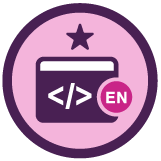Introduction
Welcome to this Course for Developers in English
Communicate with your customer accurately
Customer-oriented requirements
How iteration cycles work
Planning considering priorities
Review: communicate with your customer accurately
Understand your customer and the requirements
Prioritizing requirements
Backlog and Milestone 1.0
Organize your tasks!
Organizing your time into user stories and tasks
Stand-up meetings, analyze and design
Review: organize your tasks!
Create deliverable design
Creating deliverable design
Refactoring, meetings and release
Protect your very valuable software
Understanding the principles of defensive development
Functional and unit testing
Review: protect your very valuable software
Understanding Continuous Integration (CI) and testing
Types of software testing
Handle accidents when building the code and what CI means
Test your Software!
TDD Test-Driven Development
Review: test your software!
Be ready for the end
Prepare for the next iteration
End an iteration
Fix your bugs!
Handle bugs to fit your process
Continuous integration test delivery method
Review: fix your bugs!
Conclusion
We've come to an end!
Expert Mentorship
Você não tem acesso a esta aula
Continue aprendendo! Junte-se e comece a impulsionar sua carreira
Se você já tem uma conta,

Handle bugs to fit your process
22/25Un bug es un error en el diseño o desarrollo de un software o plataforma que hace que se produzca un resultado inesperado en la experiencia de usuario. El código que creaste en front end o back end se comporta de manera no deseada.
¡¡Encontramos BUGS!! Eventualmente, los bugs aparecerán. Son inevitables en el desarrollo de software y hay que arreglarlos. Hablemos sobre ello para que entiendas cómo modificarlos.
El ciclo de vida de un bug
Un bug pasará por varias etapas en su “vida” hasta estar solucionado. Es una forma de llevar un control del mismo.
- The actual life cycle of a bug is as follows:
- A tester finds the bug.
- The tester files a bug report.
- You create a story to fix the bug.
- Fix the bug.
- Check the fix and verify that it works.
- Update the bug report.
Entrega continua, corregir errores funcionales
A excepción de que el equipo de desarrollo sea grande y puedan darse el lujo de arreglar todos los bugs, solo soluciona los funcionales y los que se encuentran en producción.
- It is necessary to create user stories to fix bugs.
- Fixing bugs takes time, and all that time needs to be taken into consideration when estimating the length of your iterations.
- Fix functional bugs first! Only fix code to fix your user stories.
- Everything revolves around customer-oriented functionality.
- Only fix what is broken, and you know what is broken because you have tests that fail.
- Writing beautiful, perfect code is great, but writing good-enough code is better.
Spike Test
La intensidad con la que hagas tus pruebas será importante. Tomarse un período en donde todo el equipo haga pruebas para determinar la calidad actual del producto.
- A Spike Test is a period in which there is an “explosion” of the testing activities.
- Test continuously, and take random bits of code and functionalities to ensure functionality before delivery.
- Weed out bugs, later you can use the result to estimate adjustments.
- Take a week to do your spike test.
- Pick a random sample from the tests that are failing and try to fix just those tests.
- Act based on the results of the Spike testing effort. At the end of the week, calculate your Bug Fix Rate.
Determinar una métrica, el costo en tiempo y esfuerzo de solucionar los bugs te permitirá realizar mejores estimaciones para la próxima iteración. Trabaja con tu equipo en la estimación de los bugs para luego estimar las tareas más importantes.
Contribución creada por: Kevin Fiorentino.
Contribuições 0
Perguntas 0
Quer ver mais contribuições, perguntas e respostas da comunidade?